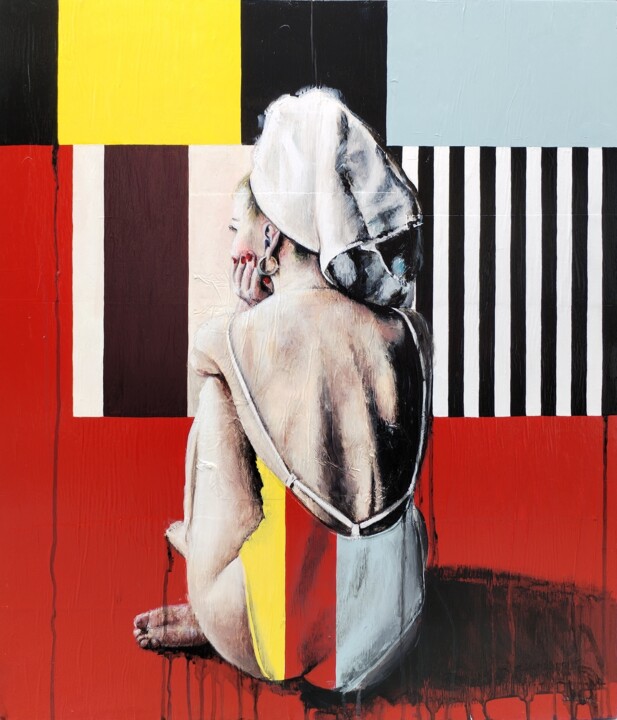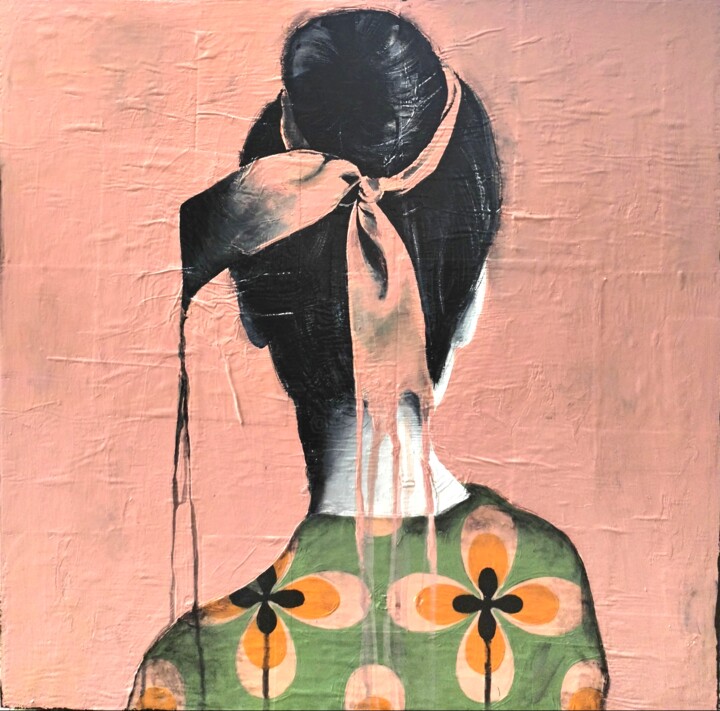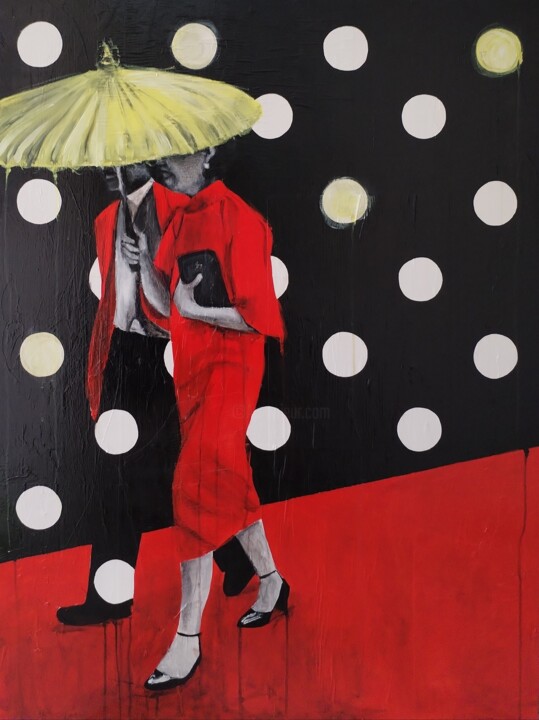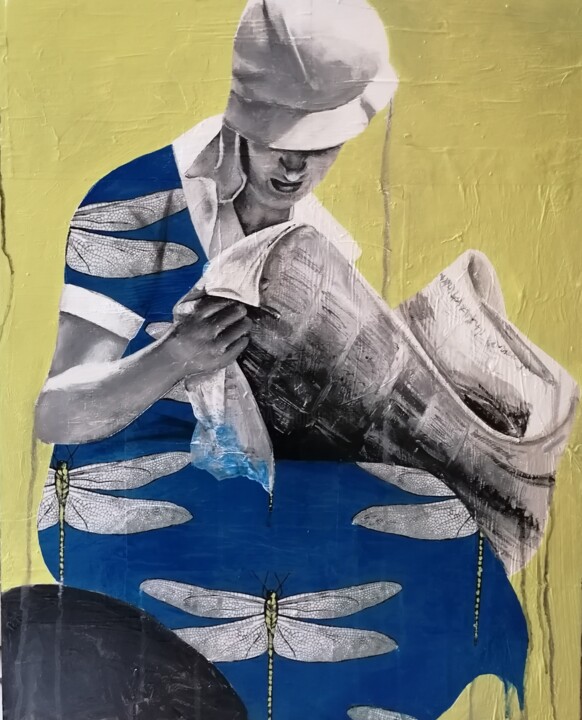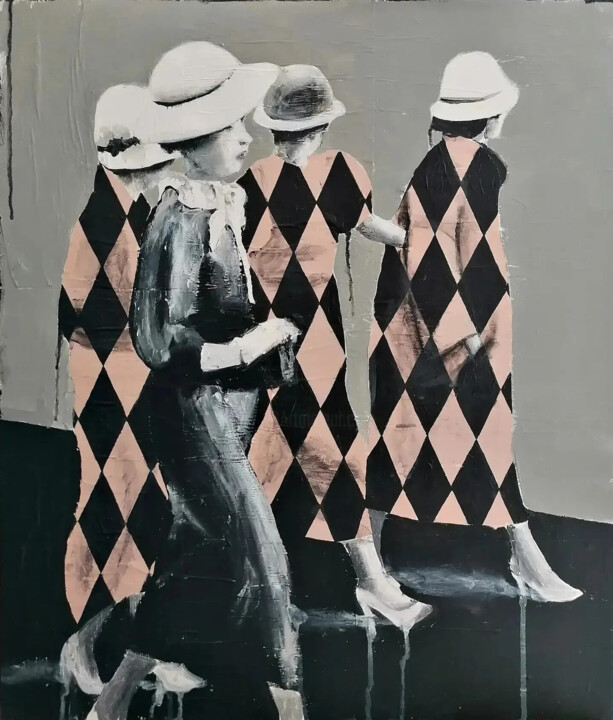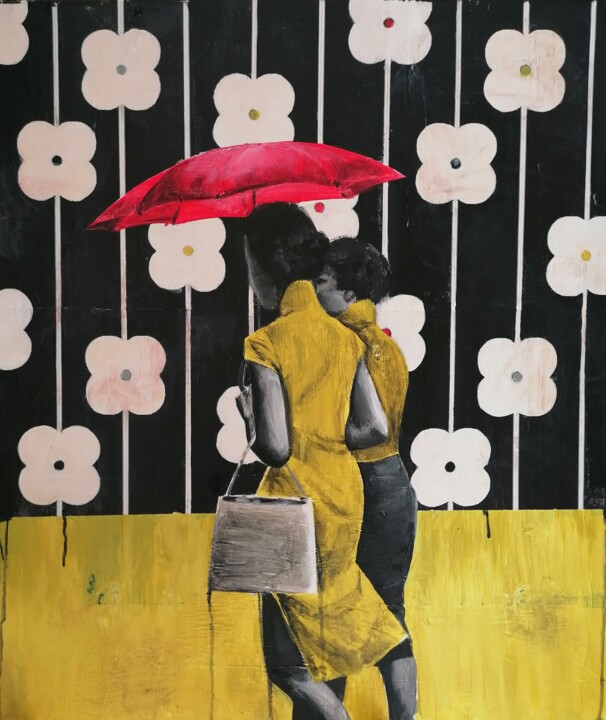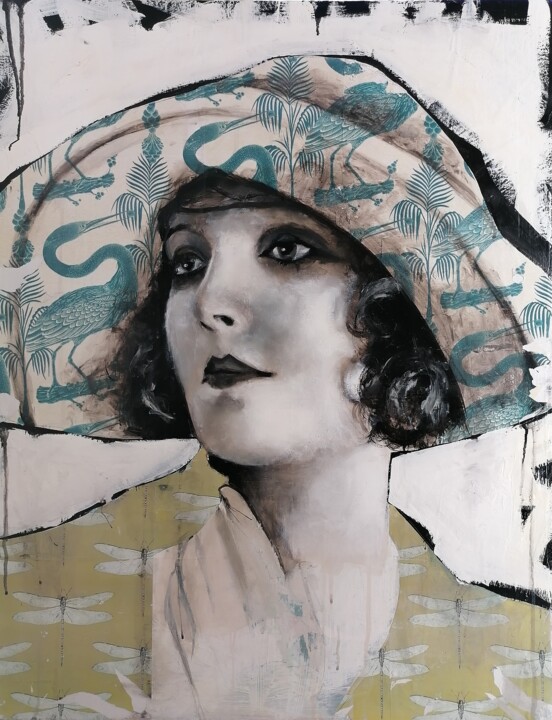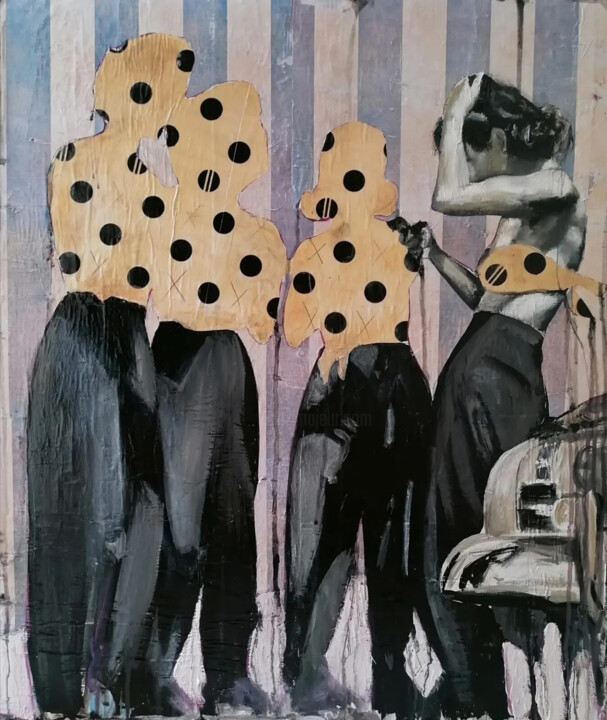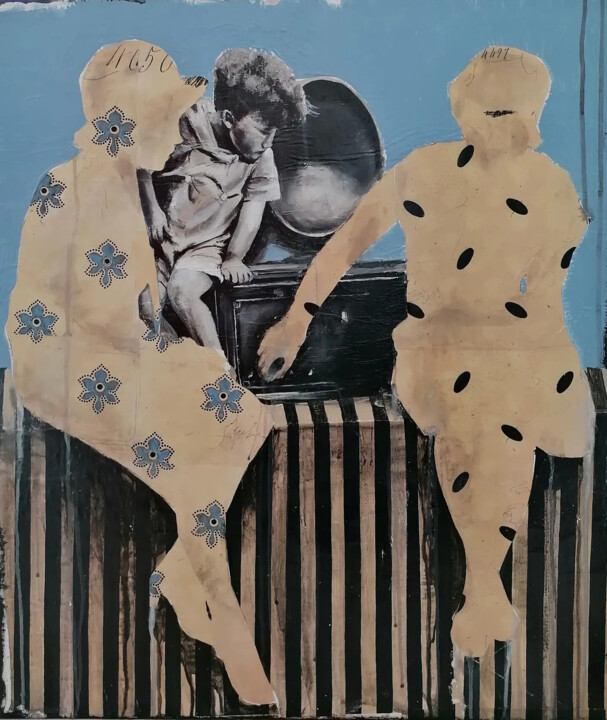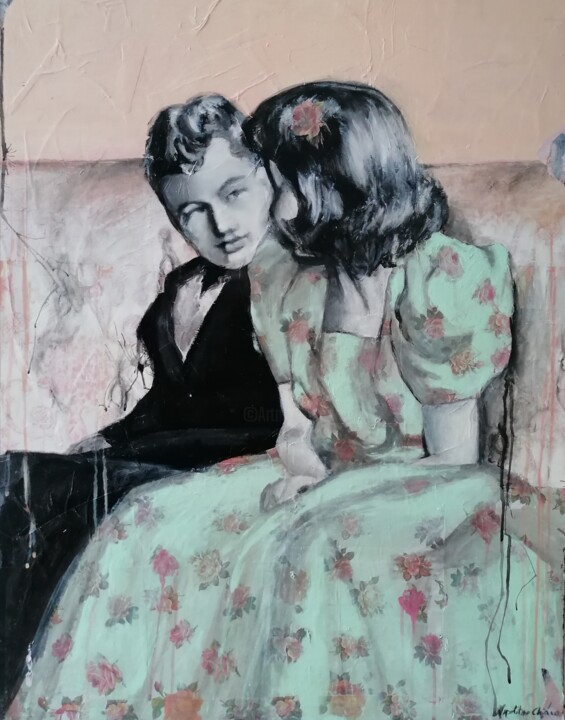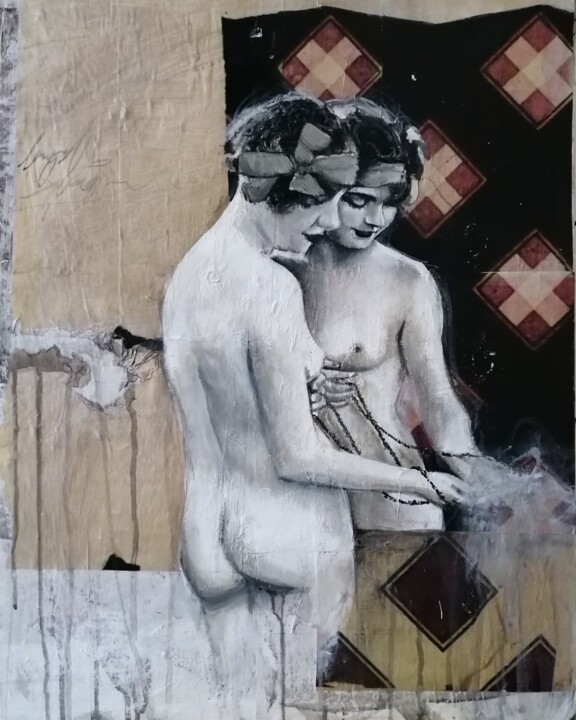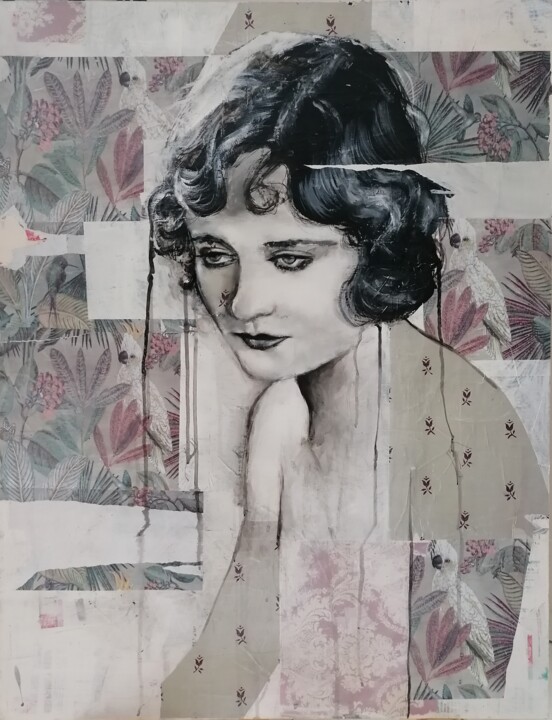What inspired you to create art and become an artist (events, feelings, experiences...)?
I have always had a passion for art from a young age. I don't think there is a reason why I paint. It is more of a need. Just as a human being has a need to feed, a pigeon has a need to fly.
Creating allows me to breathe, to breathe in moments of life that are mine alone.
They belong to me and they heal me.
What is your artistic background, techniques and subjects you have experimented with so far?
I began my artistic journey by making portraits and still lifes, in a realistic style, with pastels on cardboard.
Over time I put aside this passion for pencil drawing and, having never painted, I experimented with oil painting, but with poor results.
With acrylic painting, however, I was immediately attracted.
I began, then, to reproduce author's copies in pop art style, which I displayed at ingenuity markets. Later I began to create something personal that belonged only to me. I have always loved matter in all its forms, paper, however, is the medium, along with painting, that helps me best express myself.
In early works I used to make a basic collage on board(it had to give the idea of something lived or ruined by time) on which I would then paint through the application of stencils.
The subjects were objects from the past: old vinyls, retro phones and mannequins , antique keys, given my passion for vintage.
Some time later I switched to portraits, portraits of women and children(later also depicted in everyday life) with a melancholy look, marked by tears on the paper, which I made at the end of the painting :the tears of the soul.
Now the subjects of my paintings are women, particularly women of the 1920s-30s since they best express the poetry and delicacy of femininity.
The tears are gone, but there remains that veil of melancholy, which has always characterized my works.
What are the 3 aspects that differentiate you from other artists, making your work unique?
-The 'juxtaposition of the decorative motifs of the papers I use in my paintings is never chosen at random, but thought out :I spend a lot of time deciding which pattern might look best in the context in which I am going to paint, I want something unique.
Doing a lot of research on the internet I found pictures of old French fabric scraps, dating back to the 1800s. They have wonderful patterns and lately I have been choosing them for my paintings .
I combine current techniques with subjects from a distant time, creating, at the same time, something contemporary and modern.
I think every artist is unique, everyone is different, everyone expresses their own world, themselves :art is beautiful and unique because of that.
Where does inspiration come from?
I love everything that smells of the past, from objects to fashion.
I love old vintage photos, they are what give me inspiration, I look for them on the internet or find them at flea markets.
What is your artistic approach? What visions, sensations or feelings do you want to evoke in the viewer?
Painting allows me to live in a world of my own and let myself go.
The viewer, through my art, goes back in time: he recovers a taste and a demure balance that today's consumerist society has forgotten in favor of vulgarity.
What is the creative process of your works? Spontaneous or with a long preparatory process (technique, inspiration from art classics or other)?
It happens spontaneously ,when I find an 'image that strikes me I immediately start thinking about how to personalize it in my own style. The preparatory process is a bit long: I don't make a draft but print the photo I have chosen and start cutting pieces of the subject's dress or background trying to insert, instead of them, the decorative paper. I make several tests with different patterns, once I choose the final composition I prepare, on a wooden board, the base of the painting creating a collage, on which I then apply the decorative paper and paint.
Do you use a particular working technique? If yes, can you explain it?
I use a mixed technique, acrylic and paper.
I begin the work by preparing a collage base on board :I alternate several layers of newspaper pages with coats of white watercolor, creating a rough, imperfect textural surface. Then I draw the subject, apply decorative paper to the affected areas and paint with acrylic. Many people mistake vintage paper for wallpaper: it is not, they are A4 sheets printed by a classic printer. At the end of the job I apply a coat of gloss clear coat to protect the paper.
Are there innovative aspects to your work? Can you tell us what they are?
Being innovative in today's reality is really difficult, I think everything has already been done by now. In spite of that I always want to experiment and try to be original, to be able to stand out from the crowd and make people, looking at one of my works, recognize me.
I think my strong point is the decorative papers I apply in my paintings, the patterns, the combinations, the colors.
Do you have a format or medium that you feel most comfortable with? If yes, why?
I have always loved working on large formats, although after motherhood, between work and family, having little time, I had to opt for small formats.
I find them really comfortable because the production time is cut in half, which allows me to produce more.
Where do you produce your works? At home, in a shared studio or in your own studio? And in this space, how do you organize your creative work?
I paint inside my garage, a very cramped and messy place.
I always wanted a studio of my own having to be able to organize all my work and paint in a comfortable space.
Does your work lead you to travel to meet new collectors, for fairs or exhibitions? If so, what do you get out of it?
I have participated in exhibitions and fairs in the past, but right now, I think the online market is the best investment for an artist.
How do you see your work and career as an artist developing in the future?
My art is always evolving, so I am very positive, thinking about the future.
I feel that I still have a lot to give and I will continue to paint because that is what I do best.
What is the theme, style or technique of your latest artistic production?
The subjects are women from the 1920s-30s, accompanied by other figures.
The peculiarity of these works is the fact that the secondary figure, next to the protagonist, is undefined, so we simply see a silhouette made of paper ,without a face.
After the birth of my daughter, reconciling work, art and family was difficult :I often had to step aside.
The woman painted in my paintings represents me and my desire to be there and express myself, despite everything.
Art is the medium that allows me to be the protagonist of my world ,and when I paint everything else fades away.
Can you tell us about your most important exhibition experience?
My first solo exhibition, I would say.
I had a wonderful response from people, it gave me so many emotions. Contact with people is important: I like to tell people about me and the story behind one of my paintings, and at the same time, I am curious about the key of the viewer.
If you could create a famous work of art history, which one would you choose? And why?
I love Frida khalo , so I think I would choose the work "The Two Fridas." I like the fact that, through her unique and unmistakable style, she shows how difficult it is to deal with life's transitions, especially when they require the abandonment of something and, therefore, also a part of oneself.
I admire his courage in representing his inner self without filters, without being ashamed of his own fragility
If you could invite a famous artist (living or dead) to dinner, who would it be? How would you suggest spending the evening with them?
Frida khalo, of course!
We will spend an evening of chatting and confiding. I would like her to tell me about her visceral love for Diego, the betrayals, her secrets. And of course talk about art, compare, share thoughts and feelings while sipping good red wine.

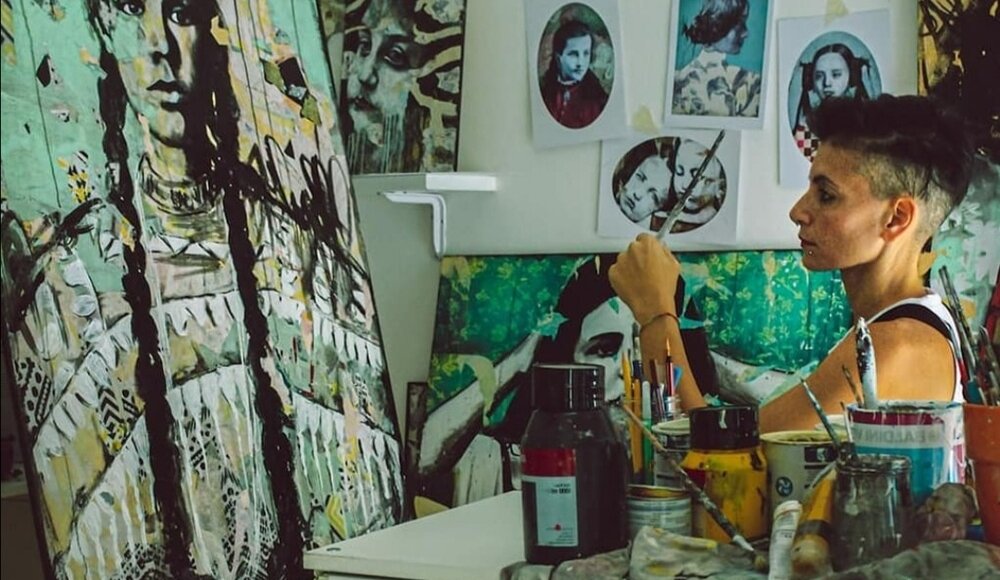





 Olimpia Gaia Martinelli
Olimpia Gaia Martinelli

